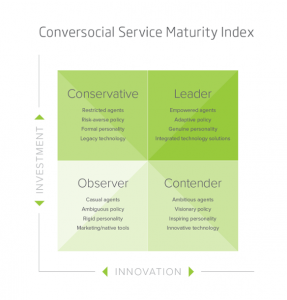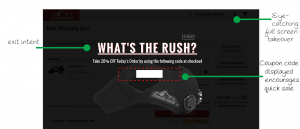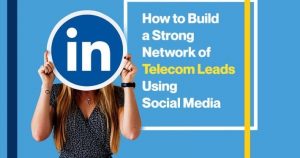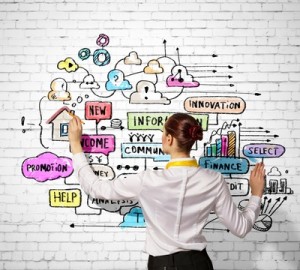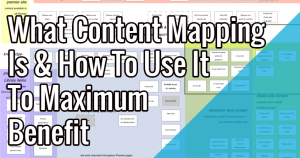— March 15, 2019
Employee Experience often gets confused with Employee Engagement. Some people think the difference between the two largely comes down to the name. After all, the results promised by high engagement numbers are those driven by a great employee experience. And because we value retention and productivity, most HR leaders are tasked with measuring and improving engagement. We hold HR departments accountable for the engagement survey results and we set goals around the numbers. Yet most engagement surveys can only offer a snapshot of how employees feel at a given moment in time, rather than provide a more comprehensive understanding across the employee life-cycle.
What Do Engagement Surveys Actually Measure?
The evidence of a correlation between high engagement and high performance is compelling. It’s a testament to how important engagement is on the bottom line, and why we spend so much money measuring it and working to improve it. Far from irrelevant, engagement offers a critical look into how employees feel about the organization at any given time–identifying the current emotional state of the workforce in a given time period.
However, measuring engagement can be tricky business and the scores can be easily influenced by recency or superficial factors. Maybe you have seen or heard of a company that meets engagement goals by offering gifts and incentives to complete the survey or timing the survey to coincide with good news. Alternatively, you may have been on the other side. Engagement numbers take a hit because of circumstances beyond your scope and you are held accountable for the results.
It can be challenging to know what to take seriously when engagement can fluctuate so much, especially when the same benefit can start off as a blessing but then suddenly shift into a source of frustration. I recently heard a great story that illustrated this conundrum. An employee at a major tech company in the Bay Area responded to an engagement survey question about break room amenities with an answer to the effect of, “I needed the food in the breakrooms when I was an intern in order to afford to eat and work here, but now it is making me fat.” I mean, come on! How do we hold a department accountable for the fact that the employee engagement experience was so successful that the employee now makes enough to live comfortably and is complaining about the food. That shouldn’t count against us, right?
How do we move forward from here? Could we get a better understanding by changing the question or looking at employee life differently? How would we measure that accurately?
These are the types of questions that led Jacob Morgan, author of The Employee Experience Advantage, to his conclusion that organizations achieving the best employee outcomes were teams thinking long-term. Instead of designing a new HR process or adding a new perk as a bandaid for issues identified in engagement surveys, teams that were knocking it out of the park were approaching engagement from a whole different angle.
Employee Experience is Greater than Employee Engagement
Think of all the experiences you have as an employee from the time you become aware of the company through the end of your tenure and beyond. The sum total of these things creates your experience. And at any given point in time, that experience influences how engaged you are. This includes typical HR functions such as recruiting, onboarding, and performance management. It consists of the relationship we have with our direct managers and with the executive team, and it takes into account culture and engagement.
Employee Experience though is so much more than that. It includes things like:
- How much traffic we had to deal with in getting to the office
- How flexible management is when it comes to family and personal obligations
- How the CRM rollout went and whether or not the team listened to your needs
- How often you can work remotely (if you want to)
- The vibe of the workplace and how it sets the tone and the mood
- How energized, motivated, and empowered we are at work
- Everything about the physical environment from the layout, temperature, lighting, and art
- The tools and technology used everyday
When you design a strategy to deliver a great employee experience, you thoughtfully consider each encounter employees have with your organization and optimize it to attract, engage and retain, the best people.
Engagement matters. However, what we have found is that engagement is one of many desired outcomes of a well-designed Employee Experience, rather than only a stand-alone goal.
Focusing on Customer Experience Alone is Bringing Diminishing Returns
Estimates show that 90% of businesses have already invested in Customer Experience (CX). The goal has been to create “raving fans” who repeatedly return to do business with you. This is a great strategy but is becoming table stakes – unlikely to provide the drastic differentiation and returns organizations saw at the start of their CX efforts.
Comparatively, most organizations have only begun working on building a competitive employer brand. Deloitte reports that only 30%-50% of employers are ready to meet critical workforce expectations. This means that there is plenty of room for growth and a significant ROI if you are able to create a differentiated Employee Experience now. Waiting too long means you may lose the chance to reap the most rewards. And because it takes time and a longer-term approach to maximize its impact, it’s more important to begin now than to wait and try to perfect it.
When you expand your Customer Experience efforts into an Employee Experience effort, your goal is essentially the same. Only instead of customers, you aim to improve employee attraction, satisfaction, engagement and loyalty. Ideally, your products and services attract potential employees who want to be a part of the work you are doing. Moreover, by the end of their time working for you – and even past that point, they continue to do business with you or recommend you to future customers or employees. Borrowing strategies from proven customer experience efforts will help Human Resources departments as they partner with leaders throughout the organization create an aligned employee experience.
The “Gig Economy” Has Diminished Employee/ Employer Loyalty
For better or worse, the old way of working your way up through the ranks, while still present in many large organizations, is evolving. An NPR/ Marist Poll found that 1 in 5 U.S. jobs are held by workers under contract and the freelance workforce is expected to grow substantially. Many in-demand skills have begun to be contracted out, and this means that the most talented members of your staff are those who have the most opportunities – not just to be recruited away, but to run away and work independently.
Add to that the tendency of workers to see places of employment as temporary in nature. The labor market is tight, and paying more than competitors isn’t enough to attract talent, nor is it a sustainable strategy. Since most jobs are viewed as stepping stones to further careers, employees want to stay at companies that will help them grow and get a variety of experiences quickly–especially Millennials.
According to Gallup Chairman, Jim Clifton, Millennials demand development over satisfaction. They want to work for places that put employee development on the same priority level as business development. This makes intuitive sense — if their career is their own business or brand, then advancing their skills is the means used to enhance their bottom line. Higher wages in many instances do not mean as much as gaining the ability to increase their value in the marketplace.
It’s worth noting that the oldest Millennials are now 38 and the youngest of this cohort are 23. This generation isn’t coming into the workforce — the whole group is already here. They make up a full third of the workforce. If you have been ignoring them or resisting making the changes they want, they will choose to work elsewhere. If you find ways to attract, and enable them to have a great experience, even if they choose to hop, the likelihood that they will boomerang and hop back to you is higher.
Your Employer Brand is More Transparent than Ever Before
Thanks to social media and sites like Glassdoor, the inner workings of an organization have never before been more transparent. What used to be hidden behind closed doors and accessible only to those who worked at the business or knew someone who worked there now gets posted about online.
Before you dismiss Glassdoor as a forum for unhappy, former employees to spill dirt, consider that a study by Software Advice found that nearly 50% of job seekers in the U.S. read Glassdoor reviews before deciding to apply to an organization. By 2018, Glassdoor was the second most popular job-related website in the country. This prompted the owners of the most popular job site, Indeed, to spend $ 1.2 Billion (in cash) to acquire Glassdoor.
It isn’t just Glassdoor, and it is not a trend that you can expect to go away. Becoming an employer of choice — especially in fields where the competition for talent is fierce — means stepping up your Employee Experience game. The best way to earn the reviews and accolades you need to attract the best talent is by creating a place where people want to work.
Moving Toward a Great Employee Experience
Can you imagine the impact if you build an Employee Experience that makes people eager to work for you? What if whenever current employees mention that they work for you their friends and associates started asking questions like, “how did you get hired?” or “Is it really as amazing of a place to work as everyone says?” What if curious customers sought you out because they had heard about how amazing your Employee Experience is – and then they spent money because the rumors were true!
The truth is, a well defined and executed Employee Experience strategy will produce measurable outcomes in revenue, talent retention, engagement, productivity, and market share. And the best part is, you likely have the pieces you need scattered across several departments. A successful strategy will stitch
Here are three steps you can take to get you started now:
- Make a list of typical interactions that an employee has during their journey with your organization. Write down everything you can think of from their first encounter with you, what steps they took to apply to the position, their interactions with people and technology along the way, how they interact with others at work, their advancement opportunities – the list goes on and on. Even better, go and speak with employees to hear their stories.
- Figure out who is already responsible for each item on your list. If employees interact with a CRM every day, who selects, tests, and develops the CRM? Who ensures that break rooms are clean and stocked? How is their performance review delivered? The key task in Employee Experience design is not to reinvent or redesign everything, it is to be aware of every aspect of the employee journey’s and its impact on the person.
- Identify three things on the list that make you proud to be part of your organization. What do they have in common? Can you articulate what makes them stand out to you? Identify a plan to ensure that these three things are done consistently well. Investing time, resources, and attention with three experiences will create a strong foundation on which an amazing Employee Experience can be created!
Business & Finance Articles on Business 2 Community
(31)

